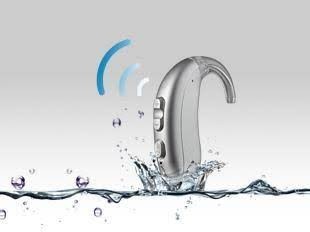Is water in the hearing aid tube easily broken?
In winter, some patients wearing hearing aids, especially those with back-ear hearing aids, will find that there is some water vapor in the hearing tube of the hearing aid. One of the reasons is that the temperature outside the winter is relatively low, and the temperature in the ear canal It is relatively high, and the hot air will enter the sound tube through the earplug hole, and the hot air will become water vapor or water droplets when it hits the low temperature sound tube, and it will be deposited on the surface of the sound tube.
If the dryness is not maintained in time, the humid air entering the hearing aid will cause the hearing aid chip to get wet, which will affect the hearing aid's effect. In severe cases, water vapor can enter the damper in the earhook of the hearing aid, causing the hearing aid to become quiet and silent. The white damper enters the water, causing the sound to become smaller or even no sound.

How to care for hearing aids in winter
First of all, before use, check whether the sound guiding tube of the hearing aid (that is, the short plastic tube connecting the hearing aid and the ear mold) is clogged with water droplets. If there are water droplets, it should be promptly dried or wiped clean. Otherwise, the transmission of sound will be affected, causing the user to feel that the sound becomes small or no sound.
Second, when replacing a new battery for a hearing aid, peel off the plastic film on the battery, rub the positive electrode of the battery by hand and put it into the hearing aid, which will help the battery work better.
Finally, don't ignore the moisture-proof maintenance of hearing aids in winter. Although winter is drier than summer, there is still a certain amount of humidity in the air in winter, and the temperature difference between indoor and outdoor in winter will have a certain effect on the hearing aid, so regular drying and maintenance of the hearing aid is also essential.
But there are various ways to prevent moisture. Some people think that the northern region is dry and do not need a special drying treatment for the hearing aids; some people think that their ears are not wet, so they don't need a special drying treatment for the hearing aids. and many more. These understandings are somewhat one-sided. Because the speakers and microphones of hearing aids are electronic sound processing elements, their working environment is in the human ear canal. The human ear canal itself secretes a liquid that is the same as sweat, condensing on the hair on the front end of the ear canal, and some people have a special secret: oil ears. This situation indicates that the hearing aid is actually working in a humid environment. There are also people who have perforation of the drum mold due to otitis media, and the fluid secreted from the viscous mold layer of the middle ear will continuously flow into the outer ear; sometimes the pus will flow into the outer ear when the middle ear is inflamed. These conditions make hearing aids not work in a dry environment. In addition, climate change can cause hearing aid temperatures to be higher or lower than the ambient temperature. This will cause water vapor in the air to condense inside the hearing aid.
Therefore, hearing aids need to be dry and maintained frequently. Prepare an electronic dryer to put the hearing aid in every night. It is necessary to carry out maintenance. Persistence can prolong the life of the hearing aid.
category
